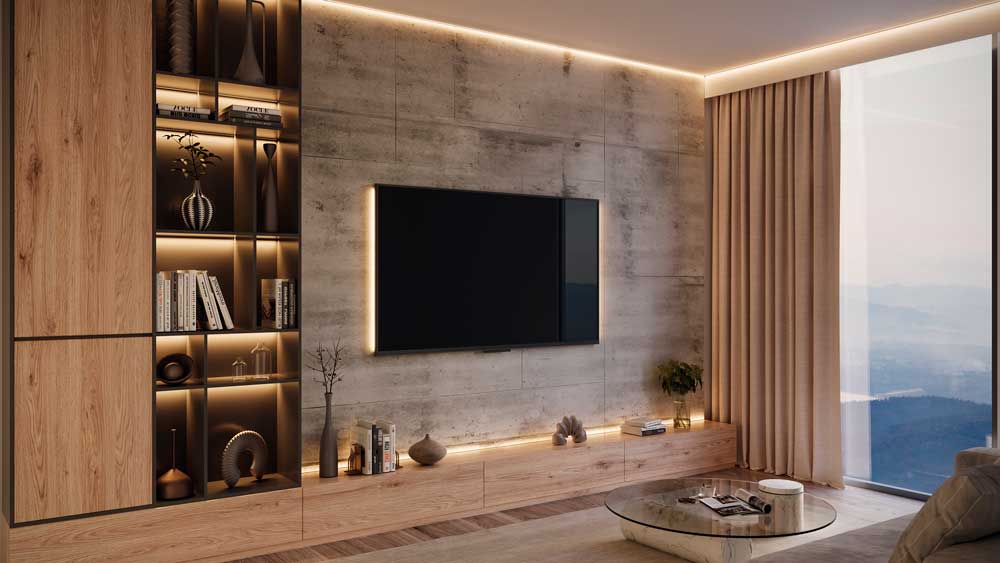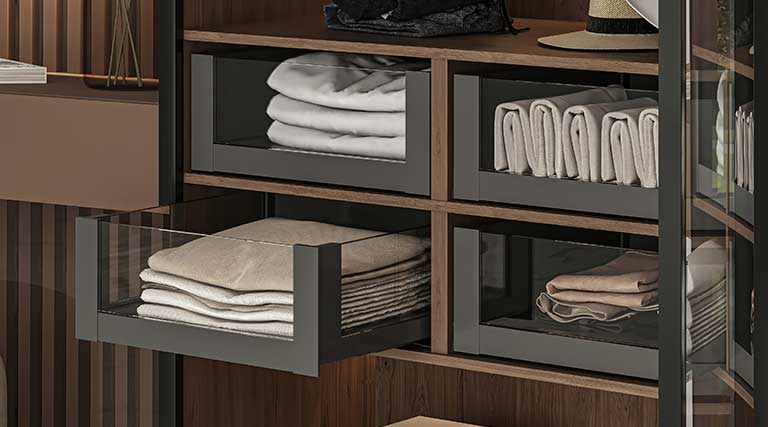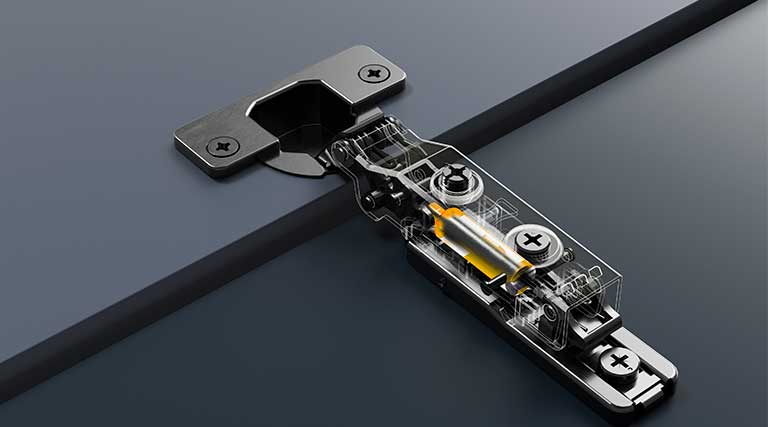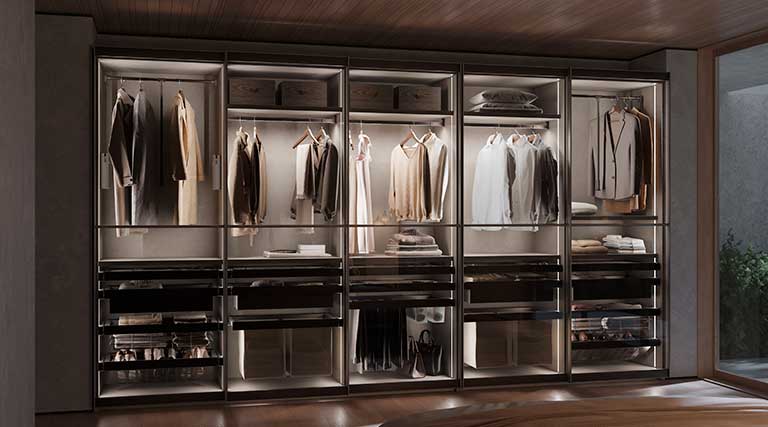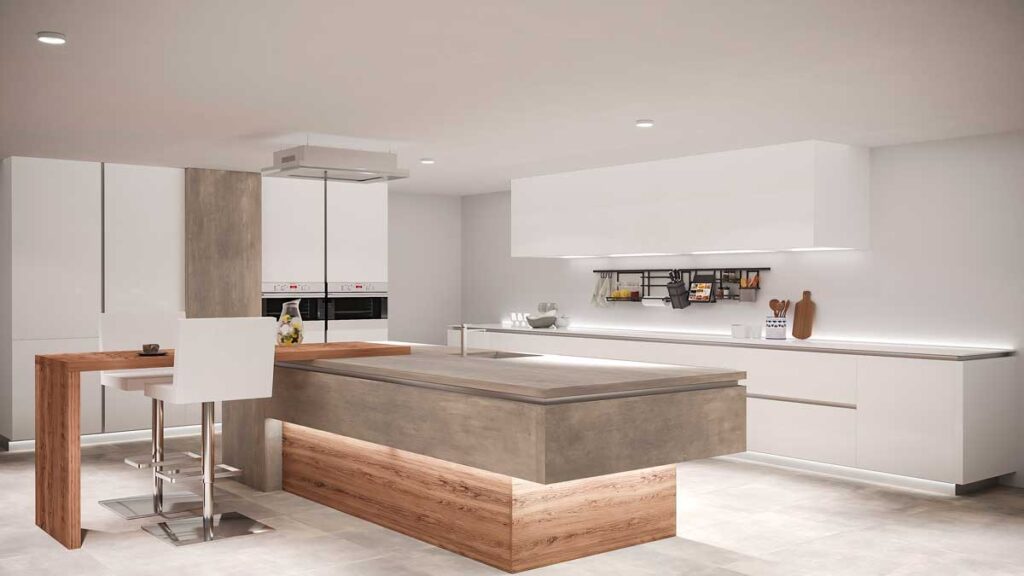
Why should you choose LED kitchen lighting?
To begin with, LED kitchen lighting provides significant energy efficiency. This is a compelling argument, because it means real savings for the customer.
In addition, it provides clear light, which is essential for work areas such as the kitchen. Because, at the end of the day, that’s what we do in that room: cook. If we can’t see properly, even if the kitchen is beautiful, it loses its appeal.
It is important to bear in mind the details of the design, as we can use different types of LEDs in the kitchen to suit our needs. This makes it possible to illuminate drawers, cupboards, shelves or the room in general, as well as other practical details.
By choosing the right lighting, we give the kitchen a high degree of personalisation, which also makes it more practical. It is possible to illuminate exactly where it is needed, reducing shadows and creating a cosy atmosphere where it is needed.
Key areas where we should install LED lighting in the kitchen
To get the most out of LED kitchen lighting, the first thing to do is to plan carefully where we are going to place each light source. These are the areas where lighting is essential:1. Worktops
This is the area where precision is most needed. Direct lighting is perfect here, as it is uniform and avoids annoying shadows. It also greatly improves safety when cutting or cooking. An excellent option is the Crux 12V DC LED spotlight, which can be installed under tall units to provide spot lighting in work areas.2. Inside drawers and cupboards
Opening a poorly lit drawer is a nuisance. Installing an LED light inside drawers greatly improves the functionality of the furniture. It is something that, over time, customers will appreciate more and more. We recommend the Taika LED light for drawers, with its integrated sensor that activates when the drawer is opened. It is these details that make LED kitchen lighting more practical.3. Lighted rails for tall cabinets
In very tall cabinets or pantries, especially if they are deep, conventional lighting is rarely sufficient. Thanks to options such as the Castor LED wardrobe rail, you can solve this problem for your customers. What’s more, as there are systems with motion sensors and removable batteries, you are providing a smart solution in every sense. This is essential if you are going to have tall or very deep furniture.4. Decorative lighting
We cannot leave out decorative LED lighting for kitchens. With it, you can do everything: enhance specific areas, highlight architectural elements with LED strips, install decorative spotlights or make a specific area warmer. Creating atmospheres in the kitchen makes it an even more pleasant space. Check out our options in the Emuca LED lighting category.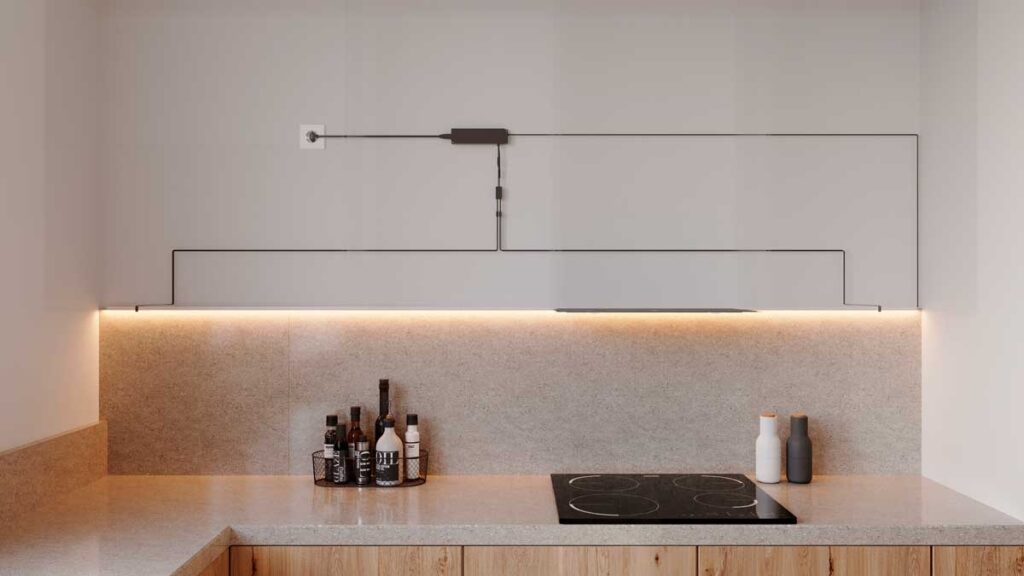
How to choose the right colour temperature
A key aspect of LED kitchen lighting is colour temperature, which directly affects the perception of the atmosphere we want to create. We provide you with a range of wattages to give you an idea of which ones to use:
- Warm white (2700K–3000K): ideal for kitchens that open onto the living room or where a particularly cosy atmosphere is desired.
- Neutral white (4000K): perfect for the work area. It provides natural light that does not strain the eyes.
- Cool white (5000K–6000K): provides maximum visibility and is usually reserved for areas with high lighting demands.
It is very important not to overdo the power. Not only because we save electricity, but also because if the kitchen has too much light, it can become too cold, especially at night. This should be taken into account for open-plan kitchens, which are integrated with other rooms such as the living room.
